Abdullah Ali Aboughuffah1, Walid Faraj Naamat2, Hamza Atia Alzrgani3
Mohmmed Ismail Abosalah4 Seham Salem Fedraj Algeesh5
Department of public health, Faculty of health sciences, Alasmarya Islamic university1,2,3,4
Department of nursing, Faculty of health Science, Alasmarya Islamic University5
abogffa@gmail.com1, w.naamat@asmarya.edu.ly2, Ha.atia@asmarya.edu.ly3, Mohammedabosalah2020@gmail.com4
HNSJ, 2022, 3(11); https://doi.org/10.53796/hnsj31136
Published at 01/11/2022 Accepted at 05/10/2022
Abstract
There are many causes of anemia bout malnutrition is the main cause, such as iron deficiency, vitamin deficiency (vitamin B12), huge bleeding due physical injuries and during menstruation that lead to loss of red blood cells, in some cases the body itself destroy the red blood cells and the body doesn’t form the red blood cells, certain infection diseases such as HIV, AIDS, and tuberculosis linked, In this study among 100 participants, in Obstetrics and Gynecology Department in Zliten Medical Center for the whole month of December 2020. The Objective of this study to evaluate the level of awareness of pregnant mothers on their knowledge of anemia during pregnancy in Zliten Medical Center.
Key Words: Anemia, Pregnancy, Medical, hemoglobin
Introduction
According to the world health organization (WHO) anemia is a condition in which the number of red blood cells (RBCs) or their oxygen-carrying capacity is insufficient to meet physiologic needs. Anemia is the major public health issue in worldwide now a days ,is a pervasive global public health problem, an estimated 2 billion people are affected or more than one third of the world’s population.(1),(2)
Anemia is defined as blood hemoglobin level less than13 g/dl in men and less than 12.0 g/dl in women established cut-off points, anemia prevalence is highest in developing countries, although both males and females of all ages are affected, the most vulnerable groups are pregnant women and young children, Worldwide, more than 40% of pregnant women and over 30% of all women suffer from anemia. (2)
Anemia in pregnancy is defined as hemoglobin (HGB) concentration less than 11g/dl throughout pregnancy according to the World Health Organization (WHO). In normal pregnancy, beginning at the end of the first trimester there are physiologic expansion of the plasma volume of about 50% and an increase of red blood cell (RBC) of about 30%. This disproportional increase in plasma and (RBCs) reduces the (HGB) concentration of the pregnant woman and depending on the (HGB) concentration, prior to this expansion and the pregnant woman could be rendered anemic.(3)
Globally, the most common cause of anemia is iron deficiency, which is responsible for about half of anemia cases in pregnancy, it is estimated in development countries, and about 38% of pregnant women had iron depletion.(4)
The awareness of anemia is very important especially in pregnant women, awareness about follow a balanced diet and awareness of signs and symptoms of anemia during pregnancy, Increased awareness reduces anemia during pregnancy between pregnant women.(5)
Problem statement:
- Anemia is considered one of the most common reasons of hospitalization in department of obstetrics.
- There are increasing incidence of maternal and fetal death due to complications like hemorrhage, premature delivery and respiratory and cardiac problems due to anemia of pregnancy.
- Insufficient of knowledge and awareness of mothers on anemia during the pregnancy period due to early marriage and lack readiness for motherhood.(6)
Significance:
- This study is focused on the level of awareness of anemia during pregnancy in the Zliten Medical Center
- To propose methods for increasing level awareness of anemia during pregnancy among pregnant women in the Zliten Medical Center.
- Organizing awareness-raising seminars for pregnant women, this is to increase awareness about anemia.
Diagnostic Tests of Anemia
Often, the first test is a complete blood count (CBC), CBC is a broad-scale test that provides a count of all the RBCs, white blood cells (WBCs) and platelets in a sample of pregnant blood. It also includes other tests that provide information about pregnant mother blood, (13) most pregnant women with folate or cobalamin deficiency do not exhibit macrocytosis, which may be masked by iron deficiency or by an underlying minor thalassemia phenotype. Furthermore, 2% to 5% of pregnant mother with normocytic anemia have mild megaloblastic changes in the bone marrow that resolve with folic acid supplementation. The full blood test must be conducted during pregnancy at the first trimester and third trimester to check levels of hemoglobin in the blood. So complications during pregnancy must be prevented.
Results of Data Analysis
- Number of Respondents for every Age Category
The data gathered of 100 respondents in Zliten Medical Center, the highest percentage rate for number of respondent’s in age category for the awareness of anemia during pregnancy period was 27% from 18 to 25 years old. The least percentage rate was 23% in less than 18 years old. Table 1.0 and Figure 1.0
Table 1: Number of Respondents for every Age Category
| Age | Number of Respondents | Percentage Rate |
|---|---|---|
| Less than18 | 23 | 23% |
| 18 – 25 | 27 | 27% |
| 26 – 35 | 26 | 26% |
| More than 35 | 24 | 24% |
| Total | 100 | 100% |
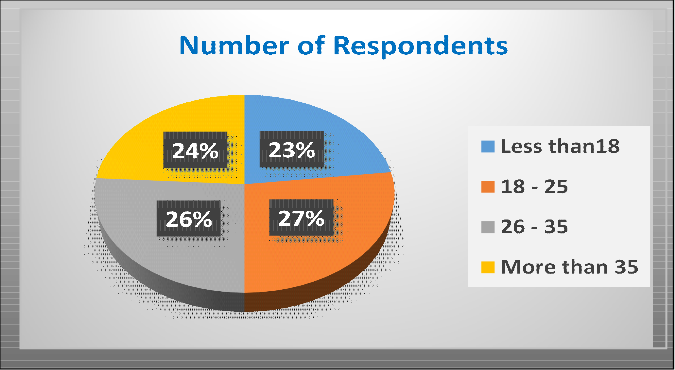
Figure 1: Number of Respondents for every Age Category
- Number of Respondents for Education Attainment Level Category
The data gathered from 100 respondents in Zliten Medical Center, the highest percentage rate for number of respondents in Educational level category was 34% in high school level and college level was 34%. Next is from elementary level which reveals 29%, and the least is graduate study was only 3%. Table 2.0 and Figure 2.0
Table 2.0-Number of Respondents for Education Attainment Level Category
| Education Level | Number of Respondents | Percentage Rate |
|---|---|---|
| Elementary | 29 | 29% |
| High School | 34 | 34% |
| College | 34 | 34% |
| Graduate Studies | 3 | 3% |
| Total | 100 | 100% |
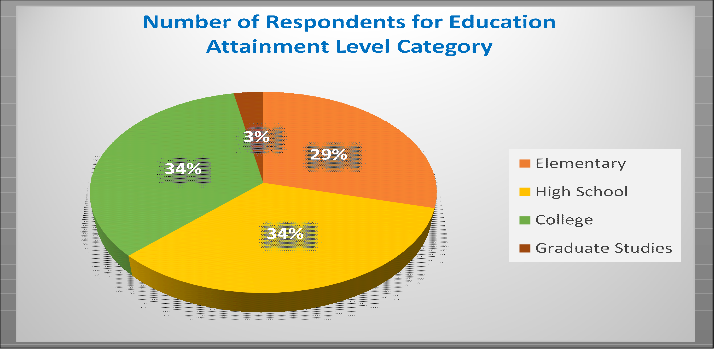
Figure 2.0-Number of Respondents for Education Attainment Level Category
- Number of Respondents for every Number of Pregnancy Category
The data gathered from 100 respondents in Zliten Medical Center, highest percentage rate for number of respondents in Number of pregnancy category was 72% in the Multi-Gravid and the least percentage rate was 28% in Prime Gravid. Table 3.0 and Figure 3.0
Table 3.0-Number of Respondents for every Number of Pregnancy Category
| Number of Pregnancy | Number of Respondents | Percentage Rate |
|---|---|---|
| Prime Gravida | 28 | 28% |
| Multi Gravida | 72 | 72% |
| Total | 100 | 100% |
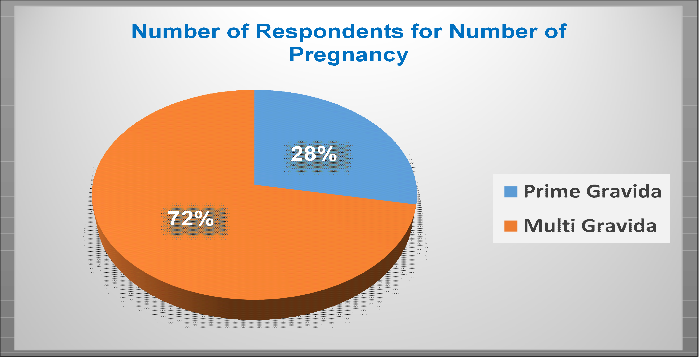
Figure 3.0-Number of Respondents for every Number of Pregnancy Category
- Distribution of Data Survey Percentage Based on Age Category
Represents the general average of 20 data questions based on age category surveys from 100 respondents of Zliten Medical Center. The highest percentage rate in “awareness” age category was 26 – 35 years old with 22% rate, while the least percentage rate in “awareness” was less than 18 years old with 15.1% rate. The highest percentage rate “unaware” in age category in less than 18 years was 7.9% and less percentage rate “unaware” in 26-35 years was 4% and in Table 4.0
Table 4.0-Distribution of Data Survey Percentage Based on Age Category
| Age | Awareness | Unaware |
|---|---|---|
| Less than18 | 15.1 | 7.9 |
| 18 – 25 | 21.1 | 5.9 |
| 26 – 35 | 22 | 4 |
| More than 35 | 19.8 | 4.2 |
| Total Ave | 78% | 22% |
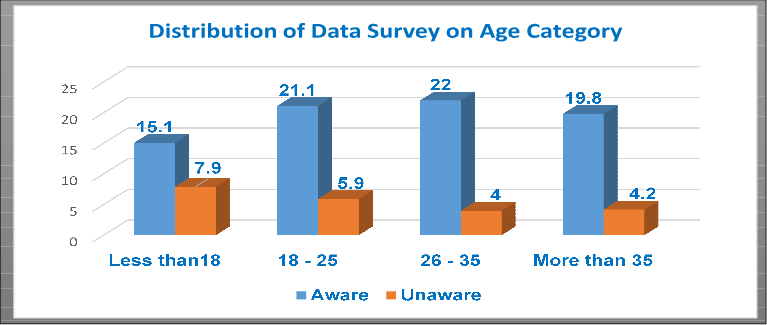
Figure 4.1-Distribution of Data Survey Percentage Based on Age Category
Summary of Age for Awareness in anemia during pregnancy period
The data analyzed and we found 78% was awareness of pregnant mothers about anemia during pregnancy and 22 % was unaware of pregnant mothers about anemia during pregnancy period. Figure 4.0.
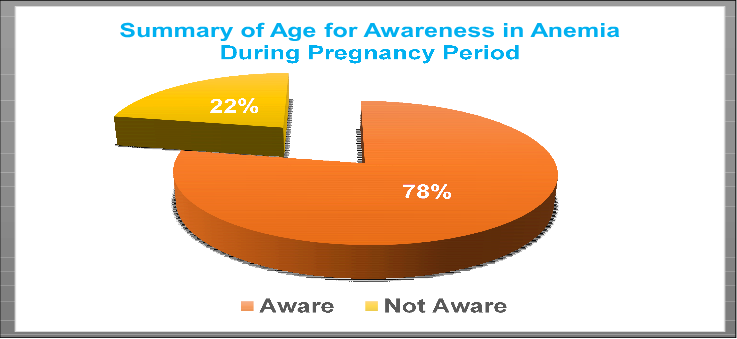
Figure 4.2-Summary of Age for Awareness in anemia during pregnancy period
Represents the general average of 20 data questions based on educational attainment category surveys from 100 respondents of Zliten Medical Center. The highest percentage rate in “awareness” educational level was 29% in college level and the least percentage rate in “awareness” was 2.45% in Graduate Studies. The highest percentage rate in “unaware” educational level was 9.6% in High School and least percentage rate in “unaware” was o.55% in Graduate Studies.. Table 5.0
Table 5.0-Distribution of Data Survey Percentage Based on Educational Attainment Category
| Education Level | Awareness | Unaware |
|---|---|---|
| Elementary | 22.15 | 6.85 |
| High School | 24.3 | 9.6 |
| College | 29 | 5 |
| Graduate Studies | 2.45 | 0.55 |
| Total Ave | 78% | 22% |
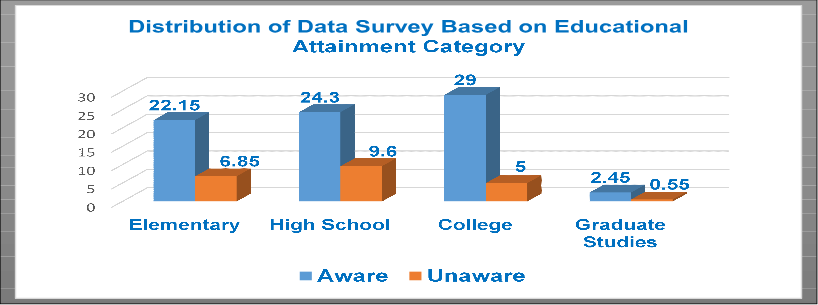
Figure 5.1-Distribution of Data Survey Percentage Based on Educational Attainment Category
- Summary of Educational Attainment in Awareness of Anemia During Pregnancy Period
The data analyzed, the awareness rate of education level was 78% in awareness of pregnant mothers of anemia during pregnancy, and 22%was unaware of pregnant mothers of anemia during pregnancy. Figure 5.2.
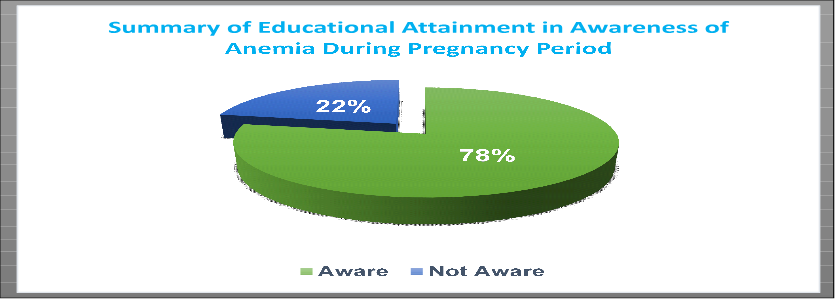
Figure 5.2-Summary of Educational Attainment in Awareness of Anemia During Pregnancy Period
- Distribution of Data Survey Percentage Based on Number of Pregnancy Category
Represents the general average of 20 data questions based on number of pregnancy category surveys from 100 respondents of Zliten Medical Center. The highest percentage rate in “awareness” level for number of pregnancy category was 57.15% in Multi Gravid and the least percentage rate “awareness” was 20.58% in Prime Gravid. The highest percentage rate in “unawareness” level for number of pregnancy was 14.85% in Multi Gravida and least percentage rate in “unawareness “was 7.15% in Prime Gravid. Tablet 6.0
Table 6.0-Distribution of Data Survey Percentage Based on Number of Pregnancy Category
| Number of Pregnancy | Awareness | Unawareness |
|---|---|---|
| Prime Gravida | 20.85 | 7.15 |
| Multi Gravida | 57.15 | 14.85 |
| Total Ave | 78% | 22% |
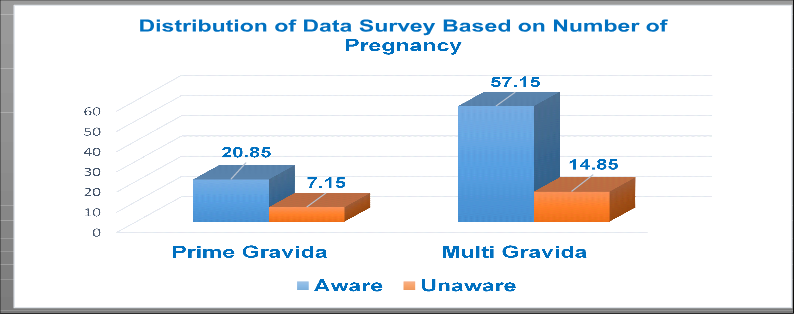
Figure 6.1-Distribution of Data Survey Percentage Based on Number of Pregnancy Category
- Summary of Number of Pregnancy in Awareness of Anemia During Pregnancy period
Represents the awareness of number of pregnancy was 78%in “awareness” and 22%was “unaware” for awareness of anemia during pregnancy period. Figure 6.1
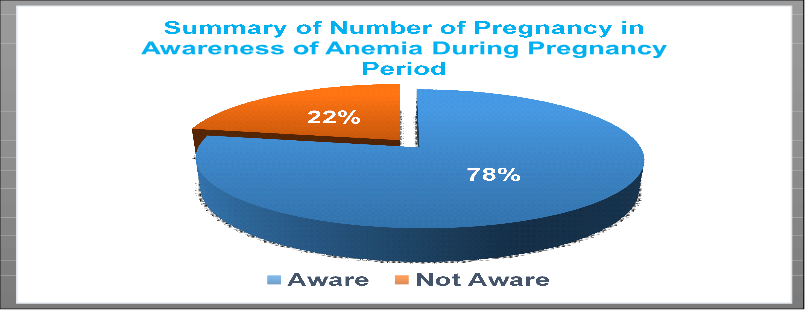
Figure 6.2-Summary of Number of Pregnancy in Awareness of Anemia during Pregnancy period
Conclusions
the percentage of Educational level category was 78%awareness and 22% was unaware, and the highest percentage rate for awareness in Educational level was 29% in College level and the highest percentage rate for unaware in Educational level was 9.6% in High School level. The result is agreed with previous study conducted in South Ethiopia in 2017, the study showed the highest percentage rate for awareness was 25.2% in College level and the percentage rate for awareness was 6.5% in Secondary level. Also agreed with the study in Iraq in 2019 the study showed the highest percentage rate for awareness of pregnant women was 30% in College level.
In the result, the percentage rate for Number of Pregnancy category was 78% awareness and 22% was unaware .The percentage rate for awareness was 20.85% in Prime Gravida 57.15% in Multi Gravida. The percentage rate forunawarewas7.15% in Prime Gravida and 14.85% in Multi Gravida. The result agreed with previous study conducted in India in 2019, the study show the percentage rate for awareness was7.8% in prime Gravida and 69% in Multi Gravida. Also agreed with the study in Eastern Ethiopia in 2018, the study showed percentage rate of knowledge of iron deficiency anemia was 61% in good awareness and 39% in poor awareness.
A summary of the findings of the study can be made in the following points:
- Based on the data collected from 100 a sample the group of researchers conclude that the level of awareness for data distributions on each testing tools such as age educational attainment and number pregnancy was 78% respectively compared to unaware was 22%.
- Through distribution for Age category, the highest percentage rate in awareness was 22% for age 26-35 years old, and the highest percentage rate in unaware was 7.9% in less than 18 years old.
- Through distribution for the Educational level category, the highest percentage rate in awareness was 29% in College level, and the highest percentage rate in unaware was 9.6% in High School.
- Through distribution for Number of Pregnancy category, the highest percentage rate in awareness was 57.15% in Multi Gravida and 20.58% in Prime Gravida, and the highest percentage rate in unaware was 14.85% in Multi Gravida and 7.15% in Prime Gravida.
References
- World Health Organization, Hemoglobin concentrations for the diagnosis of anemia and assessment of severity, 2017
- World Health Organization, anemia 2020
- Ishag A, Abdelaziem A, et al, anemia during pregnancy. 2016
- A. oumer, et al, knowledge, attitude and practice of pregnant mother’s preventions of iron deficiency anemia in Ethiopia institutional based cross sectional study. 2018
- K Abdul Gafoor. Consideration in the measurement of awareness of the anemia. 2012
- World Health Organization, The global prevalence of anemia during pregnancy, 2018
- Stavros S, Anemia during pregnancy, 2018
- Sonudary N, Anemia causes, symptoms and their treatment, 2015
- article, vitamin b12 or folate deficiency anemia 2019
- Chowdhury’s, Rahman M,et al, anemia in pregnancy. 2014
- Richard P,et al. Making a distinction between acute and chronic blood loss anemia is important. 2016
- Khalid N, et al. Anemia: symptom, causes, prevention, diagnosis and treatment. 2019 , E-mail: Khalid.iqbal@bzu.edu.pk
- Cedars-Sinai. Anemia in pregnancy. 2020
- Maureen M, Aehebe, et al. How I treat anemia in pregnancy iron, cobalamin, and folate. 2017
- SPRING. Understanding anemia, Guidance for conducting a landscape analysis. 2017
- Katherine Colman and Sue Pavord, et al. Iron Deficiency Anemia. January 2017
- Dr. Leon B, Dr. Paul B, … et al, Embryonic & Fetal Development, 2015
- . NIC, Guide to a Successful Pregnancy 2020
